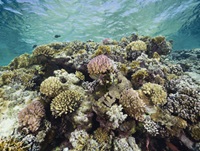
Until now, scientists have worked with an indirectly derived dissociation constant – a measure of acid strength – for carbonic acid of 3.6. Using femtosecond infrared spectroscopy researchers from the Max Born Institute in Berlin, Germany, calculated a dissociation constant of 3.45 (Science doi: 10.1126/science.1180060). This means carbonic acid is a slightly stronger acid than previously thought.
The researchers used a ‘photoacid’, 2-naphthol-6,8-disulfonate, to study the ‘ultra-fast’ transfer of a proton to the HCO3 – species. Photoacids become more acidic when excited to higher energy levels by pulses of light, meaning reactions can be triggered when required.
The development was made possible by the accuracy of the time resolution, explains Erik Nibbering, who led the research. The dissociation of carbonic acid into CO2 and water, which is thought to occur over a micro- to millisecond timescale, normally frustrates efforts to study the compound. But the researchers were able to take measurements over pico- to nanosecond periods.
A good understanding of carbonic acid will be important for the successful implementation of CCS strategies, Nibbering says. Those looking to store CO2 in the ground, in layers previously occupied by oil and gas, will have to consider surface reactions.
‘The femtosecond dynamics and equilibrium constants of reactions involving CO2, water and carbonic acid are obviously of enormous importance in understanding the effects of rising CO2 levels in the oceans and for carbon capture technologies,’ says Klaas Wynne, a chemistry professor at the University of Strathclyde, UK. ‘It really is quite stunning that crucial equilibrium constants were so poorly known previously.’





